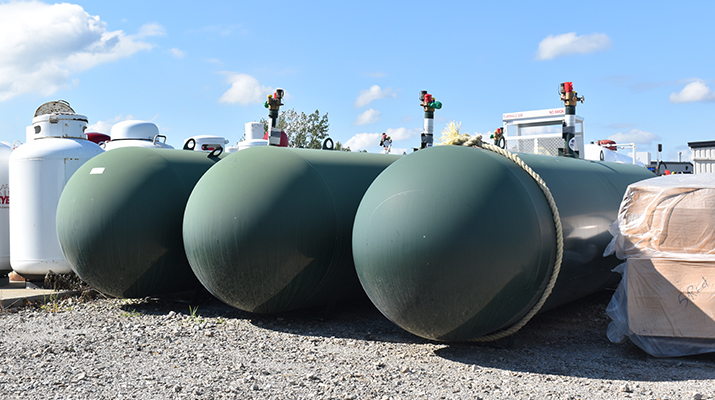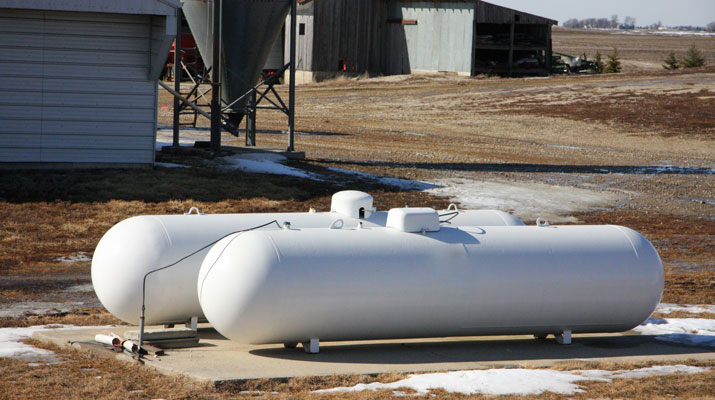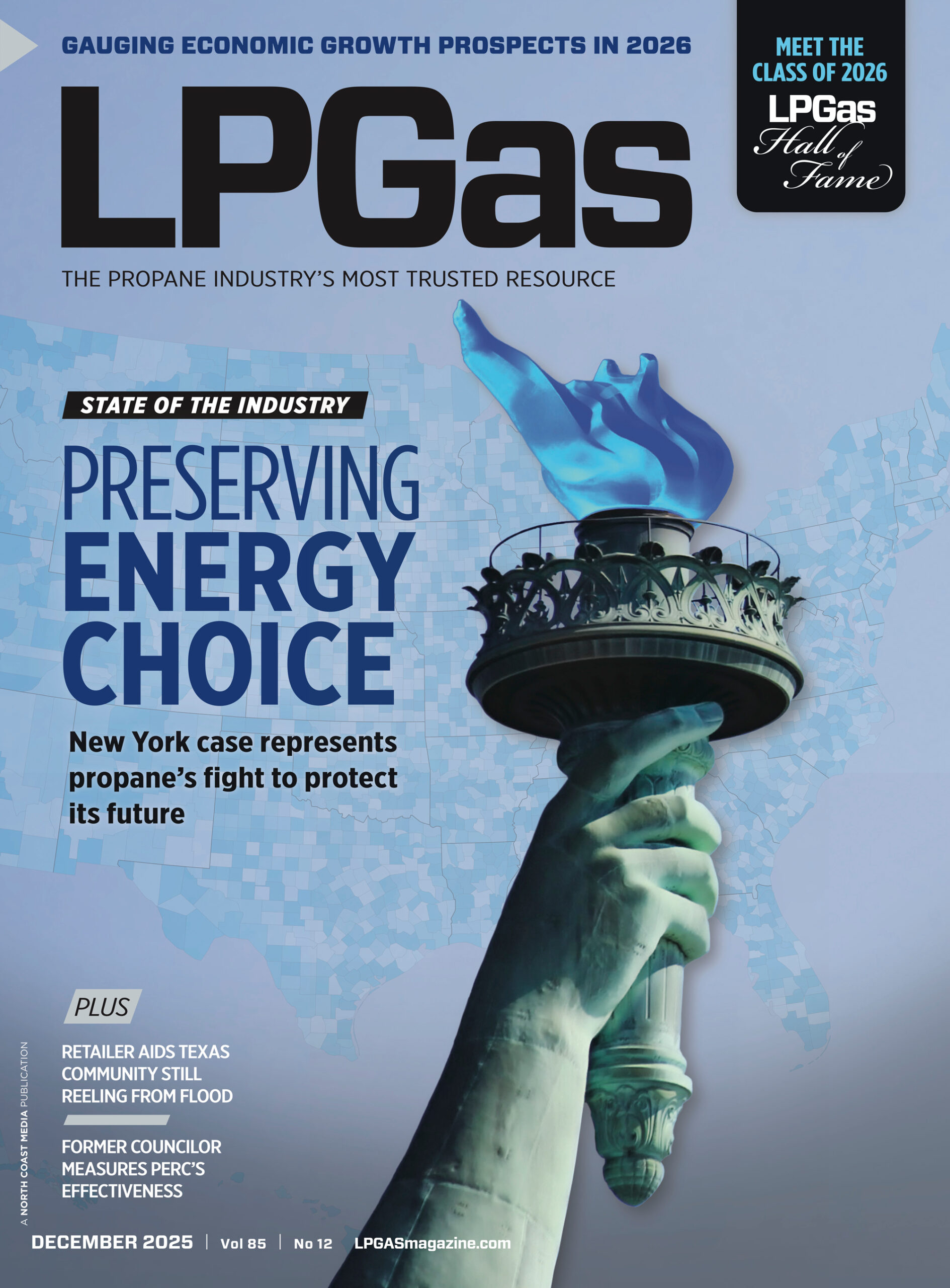A market perspective: Curtis Donaldson
 School districts. Municipalities. Cab companies. Shuttle operators.
School districts. Municipalities. Cab companies. Shuttle operators.
The industry has made considerable strides over the last few years to convert fleets in all of these areas across the United States to propane autogas. Work remains, though, to position autogas as a more mainstream motor fuel.
LP Gas caught up with Curtis Donaldson, founder and managing director of autogas equipment and fuel systems manufacturer CleanFuel USA, for his thoughts on how propane retailers and others within the industry can further the market and capture additional gallons.
LP Gas: What are your thoughts on how the autogas market has evolved to this point? In which areas has the propane industry excelled? In which areas can the industry do more?
Donaldson: One thing we didn’t have in the 1990s was OEM (original equipment manufacturer) vehicles. It was hard to substantiate or differentiate propane from compressed natural gas and other alternative fuels in the ‘90s because many of the other alternative fuel options did have OEM vehicles and a lot more capital. They were pouring money into this market. That was always a barrier for autogas.
Now, several manufacturers have helped expand the OEM offerings, and I think that’s helped initiate steady growth. There are autogas suppliers who have had success in aftermarket environments, but our growth and R&D efforts are dedicated to the OEMs. In most markets around the world, an OEM model helped build the original autogas framework, as well as aid in the infrastructure development.
The approach this time has been right. We started with Blue Bird in 2006. Today, we’ve got Freightliner Custom Chassis, which offers multiple options, as well as Ford, GM and others.
You’ve got the big three on the [Type C school] bus side in Thomas Built [Buses], IC [Bus] and Blue Bird. That says a lot to get all three OEMs on board. And on the Type A school bus side, you’ve got the largest school bus manufacturer in Collins [Bus Corp.], which has more than 50 percent market share. That says to all school districts that propane is a viable, dependable and economical option.
I think the next plan is, outside of Freightliner, for other medium-duty truck manufacturers to begin offering OEM propane vehicles. We’ve grown to a point where hopefully others come in with even more options.
LP Gas: As you say, the propane industry has carved out a couple of nice niches in fleet vehicles and school buses. Are we limiting ourselves to these niches, or should we think bigger?
Donaldson: Those are great niches for our product mainly because of the OEM offerings. Every school bus manufacturer – Type A and C – has OEM offerings [on propane autogas]. That speaks volumes of that niche. The investment has been made by the OEMs as well as PERC (Propane Education & Research Council) and multiple system suppliers, and we are committed to see those two markets grow to their full potential.
The fleet side is an automatic win; they’re easy to get infrastructure to. A lack of public infrastructure is not a barrier in most fleet cases. My only thought is the need for more product availability in that segment because, by and large, you’ll go to a fleet and they’ll say, “I have pickups, vans and cutaways, but I also have another fleet with Impalas and other vehicles.” But expanding vehicle options is slowly being addressed.
I think we’ve got to continue to push and excel in those markets. Those are high-fuel users. I’m not saying I wouldn’t want to see autogas become a consumer fuel at some point, but the average consumer vehicle burns about 800 gallons per year, while the average fleet vehicle burns about 2,600 gallons per year. I’m going to take the fleet customers.
I think we have aimed for the right niches. If we dominate both school buses and other fleet customers with various vehicles, other segments will come, such as off-road, large equipment and consumer markets. I’d stay the course.
LP Gas: What are your thoughts on the level of propane retailer involvement in the autogas market?
Donaldson: Retailers are important because they own the assets – the bobtails and the delivery mechanisms. The second question the fleet manager typically asks is, “How am I going to get the fuel?” So we all need engaged marketers who offer consistency.
We’ve seen marketers get involved and then step out, then gas prices rise and they come back. This is a long sales cycle. It’s not for the faint of heart. You’ve got to see it through.
We have relationships with all of the majors who lead in gallons sold, and all have supported us in our fleet rollouts, such as UPS. Then there are independent retailers like Expo Propane, Arro Autogas and Northwest Propane in Texas who have been thinking autogas for years. Typically, those have been some of our go-to guys as well because they get it. But we don’t limit our reach and we would certainly love to see all marketers involved. So it becomes about outreach and education.
We have run into situations in which a fleet wants to convert to propane and marketers will say, “Let us know when the station is set and we’ll deliver the fuel.” We need them to pull the permit and help with installation and regulations and have one-on-one interaction with the fleet. It isn’t as easy as delivering fuel and calling it a win.
In a perfect world, 60 percent of the marketers do autogas, rather than the 20 percent we see now.
LP Gas: Any other thoughts on the autogas market?
Donaldson: I hate telling someone a problem and not having a solution, but our pricing consistency is a barrier. For example, a fleet manager converts a fleet and puts in a centrally located site, but if they pull into a public site they may get charged $4 per gallon. It doesn’t happen often enough for some of these fleets that it becomes a burning issue, but it happens often enough that it’s like a splinter in your finger. Because that fleet manager’s economics might be based on $1.19 [per gallon of propane].
Again, our niche is centrally fueled vehicles, and those guys are probably getting great prices from marketers having signed a three-, four- or five-year contract. I don’t know that [the price discrepancy] has bit us yet, but it is something that antagonizes you and won’t go away.
For example, I had a school district the other day decide to put a propane bus on a field trip. They knew their [fuel] range, and they got to Austin, [Texas]. They utilized the DOE station locator and figured out where they were going to fill up. They paid $3.85 per gallon – and this is a school district that, frankly, is accustomed to paying 89 cents [per gallon].
They didn’t go back home and say, “We’re not going to do anymore propane.” This was just a one-off. But the transportation director called me to tell me the story.
All I’m saying is that when that gets addressed, it paves the way for expansion into other niches. It paves the way for consumer [vehicles], because consumers today don’t have access to centrally fueled stations. They either pull into a bulk plant or into a public area that has access and the majority of the time they are going to pay well above what successful autogas fleets are paying for fuel. There are a lot of industry folks working on the issue, but it is certainly something we should all be addressing.
















